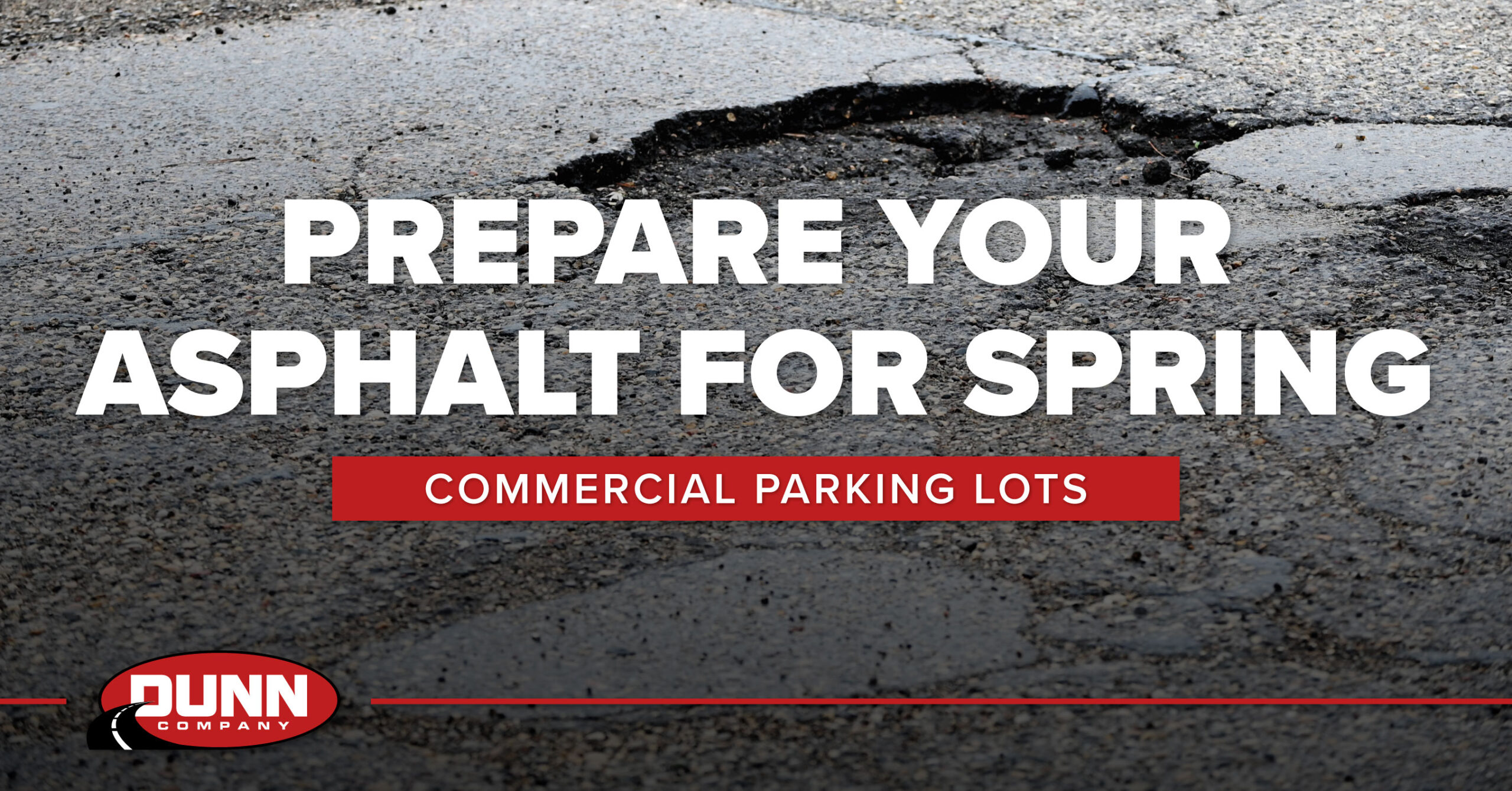How to Prepare for Your Asphalt Needs Before Spring
As winter slowly recedes, it’s time to start thinking about your asphalt and how it has held up through the cold months. Cold temperatures, snow, ice, and the freeze-thaw cycles can take a toll on your parking lot, driveway, or roadways. Spring is the perfect time to evaluate the condition of your asphalt and determine whether it needs sealing, patching, or even replacing.
In this article, we’ll cover how to inspect your asphalt, what signs to look for, and how to know when to call in the experts like Dunn Company for a professional assessment.
Before diving into specific maintenance tasks, it’s essential to do a thorough inspection of your asphalt. A proactive approach can save you from larger, more costly repairs later on.
Cracks and Surface Damage
What to look for: Small cracks may be hard to notice at first, but they can expand and deepen over time. During your inspection, check for:
- Hairline cracks: Often caused by UV damage or minor freeze-thaw cycles, these cracks are common but can worsen if not addressed.
- Larger cracks: These may be more visible and can allow moisture to penetrate the surface, leading to more significant damage.
- Alligator cracking: This pattern of cracking, which looks like scales of an alligator’s skin, indicates severe damage and potential structural failure.
What it means: Cracks allow water and debris to seep in, which can erode the base material and cause further damage. If cracks are severe, it’s time to consult a professional to determine if patching or full-depth replacement is necessary.
Potholes and Uneven Surfaces
What to look for: Potholes and depressions in the surface are some of the most obvious signs of damage. Check for:
- Potholes: These occur when the surface breaks down due to water infiltration and freeze-thaw cycles.
- Ruts and depressions: These can be caused by heavy traffic or improperly compacted asphalt during installation.
What it means: Potholes and significant surface depressions not only present safety hazards but can worsen if left untreated. Patching or a full-depth reclamation may be needed depending on the severity.
Signs You Need Sealing, Patching, or Replacement
Asphalt requires regular maintenance to stay in good condition. Knowing when to seal, patch, or replace is crucial for ensuring the longevity of your investment.
- Sealing: Sealing should be done every 2-3 years depending on the wear and tear. If your asphalt looks faded, shows small cracks, or if water is seeping into the surface, it’s time for a sealcoating.
- Patching: Patching is necessary for larger cracks or areas with damage that cannot be addressed through sealing. If you find potholes or deep cracks, patching can restore the surface and prevent further deterioration.
- Replacement: If your asphalt shows extensive alligator cracking, large areas of surface damage, or if the base material has been compromised, full replacement may be the only option. A professional evaluation can help determine if replacement is necessary.
When to Reach Out to Dunn Company
If you’ve completed your inspection and are unsure about what actions to take, or if you’ve identified significant damage, it’s time to call in the experts.
Dunn Company offers professional site evaluations to assess the overall condition of your asphalt and recommend the most effective solutions. Whether it’s sealing, patching, or replacing, our experienced team is ready to guide you through the best course of action for your property.Ready to get your asphalt ready for spring? Contact us today for a complimentary site evaluation and get your pavement back in top shape.


